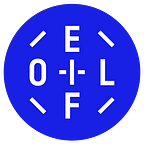How to Build a Blockchain for Logistics: Technical Paper
Blockchain technology has the potential to radically transform logistics and other processes in Supply Chain Management. There are several pending developments in this area, including technical developments as well as increased standardization and regulation. Of particular interest to the OEL Foundation is the increasing use of messaging middleware and associated message hub technology in conjunction with blockchains, and the related use of cloud-based services for systems deployment.
The OEL Foundation uses Supply Chain Management (SCM) standards in the development of the OEL Foundation Enterprise Architecture, such as those in the United Nations Economic Commission for Europe (UNECE) Trade Facilitation Implementation Guide (TFIG), and for transport of dangerous goods and safety standards published by bodies such as the World Customs Organization (WCO).
A number of blockchain reference architectures were used as models for the OEL Foundation Enterprise Architecture, including the Enterprise Ethereum Enterprise Stack, the OnChain Ontology Framework Technology Model, the CSCC Cloud Customer Architecture for Blockchain, the Tibco Reference Architecture for Blockchain and Middleware and industry specific architecture models.
The OEL Foundation Enterprise Architecture uses Open Group Architecture Framework (TOGAF) principles, and design drivers such as vendor neutrality, use of standards, messaging middleware, the use a multi-tenant SaaS cloud-based model for applications, and use of continuous deployment. It features a business process framework, metrics and benchmarks, a data model and message standards mapped to industry equivalents, facilitating integration with OEL Alliance members and 3rd other parties. The architecture is configured by mapping business processes and process steps to services, messages, and smart contracts, allowing a top-down decomposition of business use cases.
The architecture uses a typical layered stack model with the following layers:
1. An OEL Platform layer containing: distributed applications, services, oracles and a SDK
2. An OEL Protocol layer containing: APIs, messaging middleware and a message hub and services such as user authentication and authorization.
3. AN OEL Network layer containing: a blockchain, smart contracts and inter-chain integration.
A roadmap is included for development of a Minimum Viable Product (MVP) and tools for the OEL Alliance, as well as functional, technical and capability extensions (including use of Artificial Intelligence and multi-agent systems technologies. The OEL Foundation Enterprise Architecture will evolve as the OEL Foundation identifies, evaluates and incorporates components that enhance material and service offerings the Foundation makes available to the OEL Alliance.
The OEL Foundation currently uses Ethereum for smart contract development and will use the Ethereum public mainnet for the OPN Token Generation Event. OEL are currently evaluating other blockchain technologies to use in conjunction with or instead of Ethereum.
The source code of our code including smart contracts is available on our GitHub repository.
Interested in learning more? That was an excerpt from our technical paper, available for download now on the OEL Foundation website.
If you’d like to chat with us about it, please join us on Telegram.
